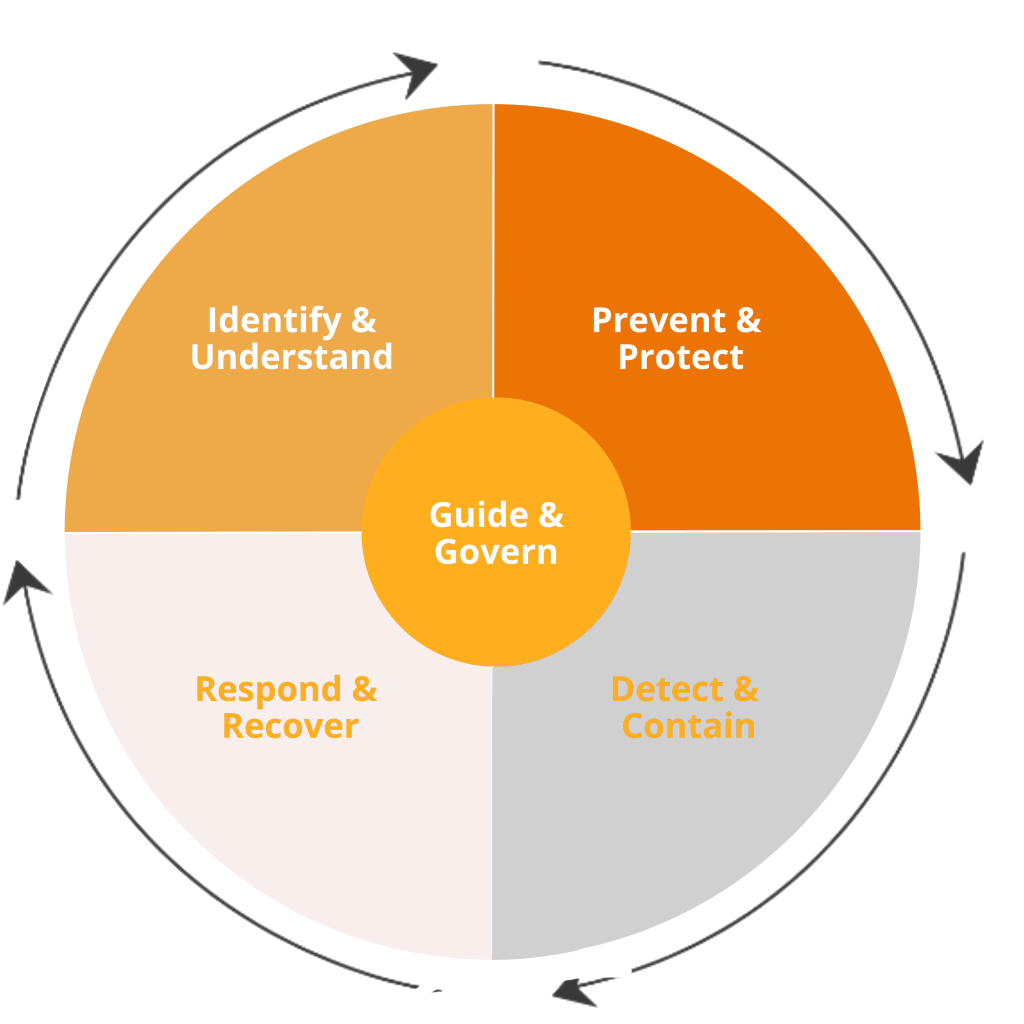Minimum Cyber Security Standard: How to achieve and maintain compliance
In an era of rapidly evolving cyber threats, New Zealand has taken a decisive step forward in strengthening its digital security posture by implementing the Minimum Cyber Security Standard. The National Cyber Security Centre (NCSC) has introduced comprehensive Minimum Cyber Security Standard that represent a fundamental shift in how government agencies approach cybersecurity. These standards, set to take effect April 2026, establish clear expectations for foundational cyber security practices across New Zealand’s public sector.

The Ten Requirements
NCSC Minimum Cyber Security Standard
The framework comprises ten critical standards that cover the fundamental aspects of organizational cybersecurity. Learn more about them below.
| 1. Security Awareness* | 2. Risk Management* | 3. Assets and Their Importance* | 4. Secure Configuration of Software* | 5. Patching |
|---|---|---|---|---|
| Relevant, up-to-date security training that aligns with the organization and reflects changes in business, technology, and the threat landscape. | Implementing a defined, documented risk-based approach to identify and control cyber security risks as part of broader organizational risk management. | Adopting secure-by-design approaches and industry best practices rather than relying on default software configurations. | Adopting secure-by-design approaches and industry best practices rather than relying on default software configurations. | Implementing systematic processes to identify, evaluate, and deploy security patches across systems and applications. |
| 6. Multi-factor Authentication | 7. Detect Unusual Behaviour* | 8. Least Privilege* | 9. Data Recovery* | 10. Response Planning* |
|---|---|---|---|---|
| Deploying MFA to protect business-critical and external-facing systems from unauthorized access and compromise. | Establishing processes to identify and respond to abnormal activity within organizational environments. | Incorporating the principle of least privilege when designing and authorizing system access. | Implementing robust data recovery capabilities to protect against data loss risks. | Developing and testing cyber-incident management plans to ensure business continuity during security events. |
*Denotes standards with built-in automation capabilities through CyberQuiz integrated security platform
The Capability Maturity Model Approach
The CMM is a framework that helps organizations assess and improve their security capabilities through defined maturity levels. Think of it like a ladder where each rung represents better organizational capability.
| CMM 1 | Ad-hoc, unmanaged security capabilities |
| CMM 2 | Well-formed security practices with repeatable processes |
| CMM 3 | Integrated, standardized security capabilities across the enterprise |
| CMM 4 | Measured, monitored security performance with strategic focus |
| CMM 5 | World-leading practices with near real-time response mechanisms |
Setting CMM2 as the minimum means organizations must have at least “Planned & Tracked” security processes – no more chaotic, ad-hoc approaches. This is a reasonable baseline because CMM1 is essentially “winging it.”
Scope and Application
The Minimum Cyber Security Standards apply to all business-critical and external facing systems. The standards are mandatory for GCISO-mandated agencies, which include core government departments and agencies handling sensitive information or providing critical services.
The NCSC is coordinating closely with the Protective Security Requirements (PSR) team and has aligned its consultation and publication timeframes
However, the NCSC encourages non-mandated agencies and even private sector organizations to adopt these standards to enhance their overall cyber resilience. This broader adoption would contribute to strengthening New Zealand’s collective cyber security posture.
June – July 2025
Public consultation period with GCISO-mandated agencies and industry partners
October 2025
Final standards publication and implementation deadline
April 2026
First compliance reporting as part of the Protective Security Requirements (PSR) assurance process
By the above dates, all mandated agencies must meet the baseline requirements and be ready to demonstrate compliance.
Why These Standards Matter
The introduction of these standards addresses several critical needs:
Addressing Growing Threats
Earlier this year, the NCSC revealed that the country faced increasingly sophisticated cybersecurity threats from criminal entities and foreign state actors. In its inaugural year as New Zealand’s primary operational cybersecurity agency, the GCSB reported a total of 7,122 cybersecurity incidents for the period ending June 30, 2024.
Establishing Clear Expectations
The standards provide unambiguous guidance on what constitutes adequate cybersecurity, moving away from open-to-interpretation frameworks toward specific, measurable requirements.
Enabling Systematic Improvement
The maturity model approach allows organizations to understand their current position and plan systematic improvements over time.
Reducing Compliance Burden
By integrating with existing PSR processes, the standards minimize additional administrative overhead while maximizing security outcomes.
Practical Implementation Considerations
Organizations should consider several factors when implementing these standards:
Asset Classification
Begin with a comprehensive inventory and classification of business-critical and external-facing systems to understand the implementation scope.
Gap Analysis
Conduct thorough assessments against each standard to identify current maturity levels and prioritize improvement areas.
Resource Planning
Allocate appropriate budget, personnel, and time for implementation, recognizing that achieving CMM2 may require significant organizational change.
Integration Approach
Align implementation with existing security initiatives and business processes to maximize efficiency and minimize disruption.
Continuous Improvement
Establish mechanisms for ongoing assessment and improvement beyond the minimum CMM2 requirement.


Trusted by Government Organizations.

Automate implementation of the Minimum Cyber Security Standard with CyberQuiz
Security Awareness Standard
- Monthly Automated Training with reminders & completion tracking
- Phishing Simulations and quiz games
- Policy acknowledgments with training integration
- Role-specific training scenarios
- Progress tracking for audit evidence
Risk Management Standard
- Employee Risk Scores (training + incidents + software access)
- Software Risk Scoring with automated updates
- Vendor Risk Assessment (TPRM templates)
- Simple Risk Dashboard for management oversight
- Risk tolerance settings for critical functions
Assets & Importance Standard
- Software & Hardware Inventory with risk ratings
- Business owner assignments for each asset
- User Access Tracking with role-based permissions
- Asset-to-team mapping for accountability
Least Privilege Standard
- Formal access grant/review process
- Role-based permissions tracking
- User access management with approval workflows
- Employee onboarding/offboarding automation
Response Planning Standard
- Incident Reporting Portal with team lead assignments
- Response plans & procedures documentation
- TableTop Training for incident response
- Team lead directory for rapid response
Get Your Free Minimum Cyber Security Standards Compliance Assessment

April 2026 ready – built for Protective Security Requirements (PSR) assurance reporting

No system integration required – user-friendly, web-based solution with options to integrate

Supports 5 of 10 required MCSS standards in one simple automated platform

Free 90-day trial with full implementation and continuous live support
Why Choose Us

Quick Deployment
No system integration or agent installation. Get started in days, not months.

Compliance Ready
Built-in PSR assurance reporting. Generate audit documentation automatically.

Human-Focused
Manage the people side of compliance. Training, awareness, and risk scoring.

Built by Us
Local expertise for local compliance. We’re helping New Zealand organizations meet Government Cyber Security Standards.
